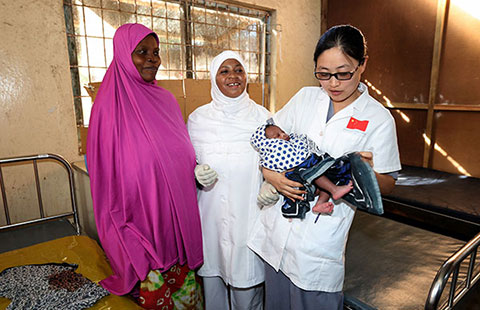New method speeding progress on H7N9
CHICAGO - ?Even as US officials this week awaited the arrival of a sample of the new bird flu virus from China - typically the first step in making a flu vaccine - government-backed researchers had already begun testing a "seed" strain of the virus made from the genetic code posted on the Internet.
This new, faster approach is the result of a collaboration among the US government, vaccine maker Novartis and a unit of the J. Craig Venter Institute, which is using synthetic biology - in which scientists take the genetic code of the virus and use it as a recipe to build the virus from scratch.
It was an idea born in the aftermath of the 2009 H1N1 pandemic, in which production delays and poor-quality seed strain slowed delivery of the vaccine until October, late enough that people were already sick with swine flu.
The new method has shaved two weeks off the vaccine-making process. It will take five to six months to ramp up production, but even weeks could make a difference in the case of a potentially deadly flu pandemic, said Robin Robinson, director of the Biomedical Advanced Research and Development Authority, an agency that falls under the US Department of Health and Human Services' Office of the Assistant Secretary for Preparedness and Response.
"We'll take it," Robinson said. "If the virus turns out to be a tough one, that could be very important."
So far, at least 33 people have been infected and 10 have died from the strain of bird flu known as H7N9 first found in humans last month.
When the genetic sequence for the virus became available on March 30, Robinson said, US health officials decided to try the new synthetic biology technique to try to speed the process. That's when Novartis and Venter's company, Synthetic Genomics Vaccines Inc, went to work. By Thursday, April 4, they had synthetic DNA ready and had started to grow the virus in dog kidney cells.
Mike Shaw, director of the US Centers for Disease Control and Prevention, said a sample of the virus arrived from China on Thursday afternoon.
That would normally be the starting point of making a seed vaccine. Scientists would take the sample, grow it and ensure it would grow well in chicken eggs or cells.
That involves a certain amount of guesswork, however. The new process of building the virus based on its genetic code allows "almost guaranteed success," Shaw said.
"That is because you're creating a virus that is almost tailor-made," he said.
Shaw said the CDC plans to take a vaccine candidate at least to the stage of human safety trials.
- Bird flu concerns threaten Yum's sales
- Bird flu concerns threaten Yum's sales
- Five more H7N9 cases reported, some recover
- New project set to combat virus
- More transparency needed to fight bird flu
- China reports 5 new H7N9 cases, 1 death
- HK education chief alerts schools on H7N9
- Subsidies earmarked for poultry industry amid scare


























